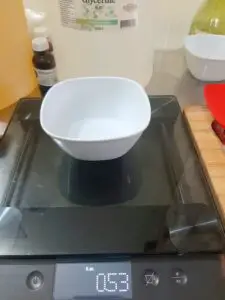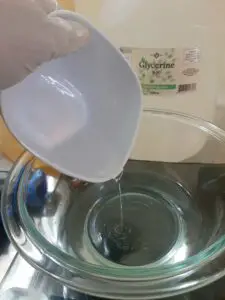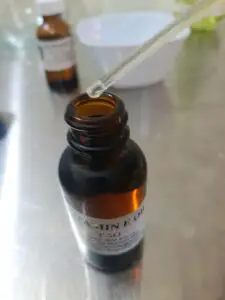Cold cream was a beauty staple in my childhood home. I fondly remember my grandmother and my aunty using it religiously, slathering it on their faces before bedtime. My granny hardly had wrinkles on her face even well into old age and my aunty is the epitome of youth today in her fifties.
As for me, my journey into cold cream use started in my late teens. I loved the dewy glow and softness it gave to my skin. Eventually, I started experimenting with other skincare products and natural oils and I stopped using it.
Fast forward about twenty years later, now at forty years old, cold cream has made a comeback in my life and I can’t see it going anywhere, anytime soon. I value it for its ability to remove makeup and dirt and leave my skin feeling baby soft.
History of Cold Cream
Cold cream originated in Greece in the second century. It was invented by a Greek physician and philosopher named Aelius Galen. His initial formulation consisted of rose water, beeswax and almond or olive oil. It was named cold cream due to the cooling effect of the rose water evaporating on the skin. The formulations have changed throughout the years from their early beginnings. Wool fat or lanolin, spermaceti from the sperm whale, paraffin and mineral oil were ingredients that featured prominently in older cold cream recipes.
The vintage cold creams of the 1920s were used as a cleansing cream and a moisturiser to soften skin and remove fine lines and wrinkles. It became popular to remove theatrical makeup and produce a clear ‘fresh complexion’, also in cold climates to prevent extreme dryness caused by the harsh weather.
Uses and Benefits of Cold Cream
Cold cream has a number of uses and benefits. It:
- Cleanses the skin by removing dirt, oil and makeup.
- Moisturizes, protects and produces a dewy effect.
- Can be used as a mask to hydrate dry skin.
- Is an occlusive, forming a protective barrier on the skin thereby preventing moisture loss.
The Cold Cream recipe in this blog post was inspired by recipes from the Druggists Circular Formula Book, 1920 edition. It is a book;
– “in which may be found recipes for hundreds of unofficial preparations in daily demand in the drug store, the laboratory, the boudoir, the household, the workshop, on the farm, and wherever there are men, women and children, domestic animals, poultry, furred and feathered pets, trees and plants; together with a compilation of process outlines, notes, hints and other valuable information and suggestions for retail druggists and dispensing pharmacists”
This book is in the public domain and can be found online at openlibrary.org here.
It contains recipes and formulations as described above and gives great insight into how many cosmetic and household preparations were initially made.
Commercial cold creams on the market today contain mineral oils. Although liquid petrolatum or mineral oil was used in some of the recipes in the Druggists Circular, I opted to use only olive and sweet almond oils which were also present in their recipes
Also, in the Druggists’ formulations, Borax (sodium borate) was used as a stabilizer in the cold creams. It was used to saponify the fatty acids in the beeswax, creating soap, which would help to emulsify the formulation to prevent it from separating, as well as adding cleansing properties to the cream.
Due to concerns that borax may cause reproductive toxicity, its use has been restricted in some countries. Therefore, it is not in this recipe.
The preservative that I used is Optiphen at 1% in the formulation. As this cream contains water, the preservative is necessary to prevent the growth of harmful bacteria. If however, you would like to omit the preservative, the cream can be kept in the fridge and should be used within a week. Always use clean utensils to scoop the product from the jar to avoid introducing bacteria into the bottle.
- Related Post: Easy DIY Shea and Cocoa Butter Lotion Bars

Ingredients Used in this Handcrafted Cold Cream
Olive Oil
Rich in vitamins and antioxidants and helps to keep skin moisturized and hydrated. It cleanses the skin by removing dirt, dead skin cells and makeup.
Sweet Almond Oil
Helps skin to retain moisture, is non-comedogenic so it won’t clog pores, is rich in vitamins and antioxidants and improves skin tone.
Stearic Acid
A naturally occurring fatty acid usually found in shea and cocoa butter that is used to thicken creams and lotions. It also has cleansing properties and helps to protect the skin from losing water.
Emulsifying Wax
Helps to bind oil and water formulations, stabilizing creams and lotions to prevent the separation of ingredients.
Distilled Water
This is the highest quality of water that can be used as it is free from contaminants and bacteria.
Glycerine
Glycerine is a humectant that draws water to itself from the environment. It helps to keep the skin moisturized.
Optiphen
A broad-spectrum preservative that is paraben and formaldehyde free. Prevents fungi and bacteria growth in the cold cream.
Vitamin E oil
A natural anti-oxidant. It helps to prevent the oils in the cream from oxidizing and going rancid. It is also anti-inflammatory and protects the skin from sun damage.
I left this cream unscented.
If this is your first time making any lotion or cream, you can also read my post on DIY Soft and Silky Lotion Recipe.
Equipment and Tools Needed
-
- Digital scale
- Immersion blender
- Thermometer
- 70% Rubbing Alcohol in a spray bottle
- Microwave oven or double boiler
- 2 Heat-safe containers
- Spatula
- Spoons
- Pipette or dropper
- Plastic containers to weigh ingredients
- Disposable Gloves
- Hairnet
- Packaging – jars or bottles
- Cheesecloth
Ingredient Measurements
Oil Phase
- 2 oz (25%) Olive Oil
- 1.2 oz (15% )Sweet Almond Oil
- 0.4 oz (5%) Stearic Acid
- 0.4 oz (5%) Emulsifying Wax
Water Phase
- 3.4 oz (42.1%) Distilled Water
- 0.5 oz (6%) Glycerine
Cool-Down Phase
- 2.5 grams ( 1%) Optiphen
- 2 grams (0.9%) Vitamin E oil
Note: Percentages are rounded after calculating in Soapmaker 3 Software.
Directions to Make Cold Cream
Preparation
Before beginning, ensure that your working area is clean and sanitized. I use a spray bottle containing 70% rubbing alcohol and spray all the working surfaces as well as the tools and equipment that I will use and allow them to air dry. Gloves and a hairnet are essential, especially if preparing this cream to share with others such as friends and/or family members.
Packaging
Spray the inside of jars or bottles that will be used for packaging as well as the lids in advance, to allow them enough time to air dry. This will help to sanitize and kill off any potential bacteria.
Gather all your equipment and ingredients.

Weigh the oils into a heat-proof container.

Next, weigh the stearic acid and emulsifying wax.


Add stearic acid and emulsifying wax to the oils. This is the oil phase.

Weigh the water and the glycerine then combine them. This is the water phase.



Next prepare the cool-down phase.

Weigh the Optiphen preservative.


Measure the Vitamin E oil and set it aside.

In the microwave or in a double-boiler, heat the oil phase just until all the solids are melted.


Heat the water phase to about 180°F (approximately 82°C). Do not let it reach boiling point.

Next, pour the water phase into the oil phase and blend with an immersion blender for about 15 seconds.


Blend it about two more times with 1-minute intervals in between blending. Let it rest for a while to allow the temperate to reach the recommended temperature range of the preservative.
The temperature for Optiphen is 176°F and below.
Add the preservative and vitamin E.


Give the mixture another thorough blend with the immersion blender for about 15 seconds.

While still warm and of a pourable consistency, pour the cold cream into the jars.


Cover lightly with a clean cheesecloth but leave the containers uncapped to allow the cream to cool completely before placing the lids on them. This will prevent condensation under the lid which can cause contamination.
Once the cold cream has reached room temperature, place the lids on the jars and store them in a cool dry place.
Note: The preservative Optiphen has a shelf life of 24 months, however, the shelf life of your cold cream will depend on the quality of all the ingredients used in the product. I would advise making a small batch where possible and using it within a 12-month period.
How To Use Cold Cream
Using clean dry hands, take out some cold cream from the container and apply a liberal layer all over the face. Massage it all over skin to help loosen makeup and dirt. Next, use a tissue or a warm washcloth to remove the cream.
You may wash your face if desired. Additionally, a thin layer of cream can be added to damp skin after washing to seal in moisture and keep skin hydrated.
Feel free to share, what’s your favourite way to use cold cream?


